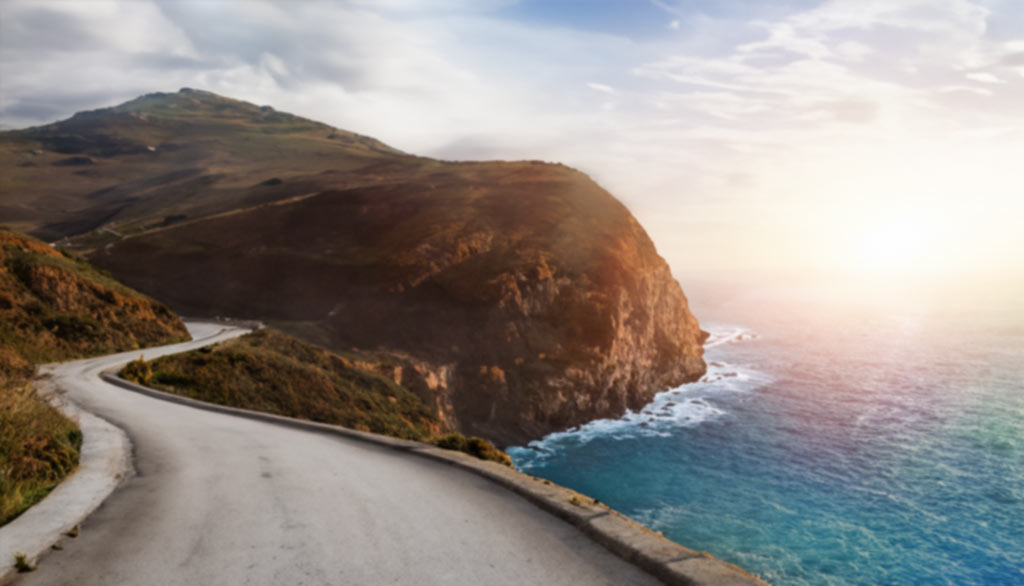Crete and Milos offer unique experiences catered to different travel preferences for travellers in Greece. Crete is larger and more developed, a better option for celebrating special occasions like weddings, anniversaries or large family gatherings. Crete can accommodate groups and provide a memorable setting for milestone events with its well-established tourism infrastructure, diverse accommodation options, and various activities and attractions. Milos is smaller and has untouched natural landscapes, which are best for intimate occasions like honeymoons or romantic getaways.
A Crete vacation promises a wealth of experiences for travellers. Crete has a deep history dating back to the Minoan civilisation, with iconic archaeological sites like the Palace of Knossos. Visitors can explore the Venetian towns of Chania and Rethymno, hike through natural wonders like the Samaria Gorge, and taste the island’s famous cuisine and wines. A visit to Crete offers a mix of beaches, mountains, and valleys, catering to various interests, from beach lounging to adventure sports.
The island of Milos has a natural beauty and unique geological formations. Travellers to Milos can expect to see landscapes of beaches like Sarakiniko and Kleftiko, with their white volcanic rocks sculpted by wind and waves. Milos island is a paradise for beach lovers, offering clear waters and secluded coves perfect for swimming and snorkelling. Visitors can explore the island’s rich history, including the ancient catacombs and the birthplace of the famous Venus de Milo statue.
Does Crete have better beaches than Milos?
No, Milos has better and more unique beaches than Crete. Crete is a larger island with many beautiful sandy beaches, but Milos is known for its volcanic landscapes and unusual beaches.
Milos has over 70 beaches featuring rock formations, colourful cliffs, and blue-green waters contrasting against the white volcanic rocks. Milos beaches including Sarakiniko, Kleftiko, and Tsigrado are considered among the most photogenic in Milos and Greece due to their terrain sculpted by volcanic activity over the years. Milos offers a more unique and memorable beach experience than Crete’s sandy beaches.
What are the best beaches in Crete?
Listed below are the best beaches in Crete:
- Balos Beach: Balos Beach is located at on the northwestern tip of Crete, near Kissamos. It features a turquoise lagoon surrounded by white and pink-hued sands, creating a beautiful landscape. The shallow, crystal-clear waters of the lagoon are perfect for swimming and snorkelling. Balos Beach’s remote location and unspoiled natural beauty make it one of Crete’s most photographed and iconic destinations. Visitors can swim and snorkel in the lagoon, sunbathe on the sands, explore the nearby Venetian castle ruins, and hike along the scenic trails that offer panoramic views of the beach and the Gramvousa Peninsula. Balos Beach is considered one of the best beaches in Crete. There is no admission cost to visit Balos Beach, as it is a public beach. Visitors must pay for parking or boat tours, depending on how they access the beach.
- Elafonissi Beach: Elafonissi Beach is a beach at Elafonisi, Inachori 730 01, Greece, Crete, on the southwestern coast of Crete, known for its pink-hued sands and clear turquoise waters. The beach is part of a small, uninhabited island connected to the mainland by a shallow sandbar, creating a natural lagoon-like environment. Visitors can swim, snorkel, sunbathe on the pink sands, explore the dunes, and walk along the shallow sandbar connecting the island to the mainland. Boat tours and water sports activities are available. There is no admission cost to visit Elafonissi Beach, as it is a public beach. Visitors must pay for parking or boat tours, depending on how they access the beach.
- Vai Beach: Vai Beach, known as the Palm Forest, is at Epar.Od. Monis Toplous – Vai, Toplou 723 00, Greece, on the eastern coast of Crete, 25 kilometres (15 miles) east of Sitia and 94 kilometres (58 miles) east of Agios Nikolaos town. It is the largest natural palm tree forest in Europe, consisting of over 5,000 palm trees that stretch along the sandy beach and create a tropical paradise-like setting. Visitors can swim and sunbathe on the soft sandy beach, explore the palm tree forest, and enjoy the various amenities such as snack bars and coffee places located on the beach. There is no admission cost to visit Vai Beach, as it is a public beach. Visitors must pay for parking or other services if required.
- Falassarna Beach: Falassarna Beach is a beach at 734 00, Greece, on the western coast of Crete, 58 kilometres (36 miles) west of Chania. It is known for its long stretch of golden sand, crystal-clear waters, and a backdrop of olive groves and vegetation. The beach has organised sections with umbrellas, sunbeds, beach bars, and more secluded areas for those seeking privacy. Visitors can swim, sunbathe, snorkel, and enjoy various water sports activities like windsurfing and kitesurfing. They can also explore the nearby ruins of the ancient city of Falassarna, adding a historical element to their visit. There is no admission cost to visit Falassarna Beach, as it is a public beach. Visitors must pay for amenities like umbrellas, sunbeds, or water sports equipment rentals if desired.
- Preveli Beach: Preveli Beach is a beach at 740 60, Greece, in the Rethymno regional unit of Crete, 35 kilometres (21 miles) south of Rethymno. It is a beach where the Megalopotamos River meets the Libyan Sea, creating a beautiful scene with a palm tree-lined riverbank and a sandy beach. Visitors can swim in the lagoon, sunbathe on the soft sands, explore the nearby palm tree forest, and hike along the scenic trails that offer panoramic views of the beach and the surrounding cliffs. Boat tours to Preveli Beach are also available. There is no admission cost to visit Preveli Beach, as it is a public beach. Visitors must pay for parking or boat tours, depending on how they access the beach.
What are the best beaches in Milos?
Listed below are the best beaches in Milos:
- Sarakiniko Beach: Sarakiniko Beach is a unique beach on the northern coast of Milos island, at Spiaggia Sarakiniko, Sarakiniko 480 60, Greece. It is known for its landscape, featuring smooth white volcanic rocks sculpted by wind and waves into shapes and formations. The beach stretches for 1 kilometre (6.2 miles), showcasing a lunar-like terrain with arches, coves, and small pools of turquoise water. Visitors can explore the rock formations, walk along the beach, swim or snorkel in the crystal-clear waters, and capture photographs of this natural masterpiece. It is a popular spot for cliff jumping, and caution should be exercised. There is no admission cost to visit Sarakiniko Beach, as it is a public beach. Visitors must pay for parking if they arrive by car or rent umbrellas and sunbeds if desired.
- Firiplaka Beach: Firiplaka Beach is a long sandy beach on the southern coast of Milos, 11 kilometres (6.8 miles) from the island’s capital, Adamas. Multi-coloured high cliffs surround it, featuring shallow, exotic waters and golden sands. Firiplaka Beach has a massive rock formation jutting out of the sea, creating a natural archway visitors can swim through. Visitors can swim, sunbathe, snorkel, and enjoy various water sports activities like stand-up paddleboarding, kayaking, and pedal boating at Firiplaka Beach. It is an organised beach with umbrellas, beach chairs, and a small canteen. There is no admission cost to visit Firiplaka Beach, as it is a public beach. Visitors must pay for parking, renting umbrellas and beach chairs, or participating in water sports activities.
- Tsigrado Beach: Tsigrado Beach is a remote and secluded beach near Firiplaka Beach, 11 kilometres (6.8 miles) from Adamas, at Milos 848 00, Greece. It is between two imposing cliffs, showcasing beautiful turquoise waters and wide-angle sea views. Visitors must navigate a narrow, steep passage dug into the rock, followed by a vertical wooden staircase, to reach the sandy cove. This adventure adds to the beauty of the beach. Visitors can swim, snorkel, explore the nearby caves and rock formations, and enjoy the secluded and peaceful atmosphere. There is no admission cost to visit Tsigrado Beach, as it is a public beach. Visitors should be prepared for the challenging access and bring necessary supplies, as there are no facilities on the beach.
- Papafragas Beach: Papafragas Beach consists of two beaches between Pollonia and Pachaina Beach, in Plaka 848 00, Greece. It is a unique creation of nature, resembling a huge natural swimming pool with emerald green water, secluded coves, and natural caves. Visitors can explore the natural caves, swim in the clear waters, and admire the unique rock formations at Papafragas Beach. Access to the beach is difficult, as visitors must navigate steep stairs carved into the cliffs. There is no admission cost to visit Papafragas Beach, as it is a public beach. Visitors should be prepared for the challenging access and bring necessary supplies, as there are no facilities on the beach.
- Kleftiko: Kleftiko is a natural wonder on the southwestern coast of Milos island. A series of white rock formations sculpted by wind and waves over time, sea caves, and clear turquoise waters create a beautiful landscape. Kleftiko is a natural geological formation with white rock formations, arches, and sea caves. Visitors can explore Kleftiko by taking a boat tour or hiking. They can swim, snorkel, or kayak in clear waters, explore the sea caves, and admire the rock formations. It is a popular spot for photography and a must-visit destination for nature lovers. There is no admission cost to visit Kleftiko, as it is a natural attraction. Visitors must pay for boat tours or hire a private boat to access the area.
How to Get to Crete?
Listed below are the transportation options to get to Crete.
- By air: Travellers have two main airport options – Heraklion International Airport “Nikos Kazantzakis” and Chania International Airport “Ioannis Daskalogiannis”. Direct flights from many European cities are available to these airports, making it convenient for travellers within Europe to travel in the summer. The most common route for travellers from outside Europe is to fly into Athens and then take a connecting flight to Crete. The airports in Crete are well-connected to the major cities on the island, ensuring easy access to their final destination.
- By ferry from Athens (Piraeus port): The ferry journey takes 8-9 hours, and major ferry operators like Minoan Lines, Anek Lines, and Blue Star Ferries operate regular services on this route. The ferries from Piraeus arrive at the ports of Heraklion and Chania, the two largest cities on the island. Travelling by ferry allows travellers to enjoy the scenic beauty of the Aegean Sea and provides a unique experience for those who prefer a more leisurely mode of transportation in Crete.
- By ferry from other Greek islands: Crete is well-connected to other famous Greek islands, making it an ideal destination for travellers to island-hop. Ferry companies like SeaJets and Minoan Lines offer regular services from islands like Santorini, Mykonos, and Rhodes to ports in Crete, such as Heraklion, Chania, and Rethymno, in the summer months. These ferry routes provide a convenient way for travellers to explore multiple islands in one trip and experience the diverse beauty of the Greek archipelago.
How to Get to Milos?
Listed below are the transportation options to get to Milos.
- By ferry from Athens (Piraeus port) or other Greek islands: The most common way to reach Milos is by ferry from Athens’ Piraeus port or other nearby Greek islands. High-speed ferries operated by SeaJets and Hellenic Seaways offer faster travel times, ranging from 2.5 to 3.5 hours from Piraeus. Conventional ferries run by Blue Star Ferries, Zante Ferries, and Minoan Lines provide a more economical option. The journey can take 4 to 8 hours, depending on the number of stops. These ferries have the advantage of being larger vessels, making them more comfortable and less susceptible to rough seas.
- By plane: Milos can be reached by air, with several airlines, including Olympic Air, Sky Express, and Aegean Airlines, operating direct flights from Athens International Airport to Milos Island National Airport. These flights take 40-45 minutes, making them a convenient option for travellers with limited time. Flights to Milos are subject to availability and may be more expensive than ferry options, especially during peak travel seasons.
- By Private boat/yacht: Travellers can sail or take a private boat or yacht to Milos from other Greek islands or ports. This mode of transportation offers flexibility, allowing visitors to explore the island’s coastline and hidden coves at their own pace. A private boat or yacht provides a unique and luxurious experience for those seeking a memorable vacation.
- Getting around Milos: Travellers have several options for getting around Milos. Renting a car is a popular choice, allowing travellers to explore the island’s diverse landscapes and beaches at one’s own pace. ATVs and scooters are available for rent, allowing access to off-road trails and remote areas. Public buses provide a cost-effective way to reach the main towns and beaches, while taxis offer a convenient option for shorter distances or when carrying luggage.
How to get around Crete?
Getting around Crete is easy with various transportation options. The Crete car rental offers flexibility to explore remote areas, though rural roads can be narrow. Major cities and airports host numerous car rental agencies like Rental Center Crete and Justrentals. Some rural roads in Crete may be narrow and winding, necessitating cautious driving. KTEL public buses connect major cities and villages at a low cost but with inconvenient schedule.
Taxis provide convenient transport in urban areas, ideal for shorter trips; agreeing on fares before starting is advisable. Ferries connect Crete to other Greek islands and the mainland, with regular services from major ports like Heraklion and Chania to destinations such as Santorini and Athens.
How to get around Milos?
Getting around Milos is easy with several transportation options. Renting a car, scooter, or ATV is the best way to explore the island at your own pace, as many beaches and remote areas are not accessible by public transport.
Milos has a public bus system with routes connecting key locations such as Adamas, Plaka, Pollonia, Sarakiniko, and other major attractions. Taxis are available but can be limited, especially during peak season. Boat tours provide access to remote beaches like Kleftiko, which are only reachable by sea. Walking is an option in villages like Plaka and Klima, where narrow streets and scenic views make it enjoyable.
Is it Possible to Go to Milos and Crete?
Yes, travellers can visit Milos and Crete during their trip to Greece. Milos and Crete are well-connected by ferry services, allowing travellers to island-hop between the two islands.
Travellers can take a ferry from Milos to the port of Heraklion in Crete which is a major island transportation hub. The ferry journey takes between 4 to 6 hours, depending on the operator and type of vessel.
Heraklion offers a wealth of attractions, including the famous Knossos Palace, an archaeological site that provides insights into the ancient Minoan civilisation. Travellers can join tours in Heraklion to discover the city’s Venetian fortifications, museums, and local culture.
What can you do in Crete?
Crete presents 24 activities that span ancient sites like the Palace of Knossos and Roman ruins, coastal attractions such as Balos Lagoon and Falasarna Beach, outdoor pursuits including hikes in Samaria Gorge and Zakros, and local experiences from Greek cuisine to lively nightlife. Visitors should read the 24 Best Things to Do in Crete and Activities before arriving Crete.
What are the Top Best Places in Crete?
Listed below are the top best places in Crete.
- Balos Beach: Balos Beach is located at the northwestern tip of Crete. It features a turquoise lagoon surrounded by white and pink-hued sands, creating a beautiful landscape. The shallow, crystal-clear waters of the lagoon are perfect for swimming and snorkelling. Balos Beach’s remote location and unspoiled natural beauty make it one of Crete’s most photographed and iconic destinations. Visitors can swim and snorkel in the lagoon, sunbathe on the soft sands, explore the nearby Venetian castle ruins, and hike along the scenic trails that offer panoramic views of the beach and the Gramvousa Peninsula. Boat tours to Balos Beach are popular. There is no admission cost to visit Balos Beach, as it is a public beach but visitors must pay for parking or boat tours, depending on how they access the beach.
- Samaria Gorge: The Samaria Gorge is a natural wonder in the White Mountains of Crete. It is one of the longest and most famous gorges in Europe, stretching for 16 kilometres (10 miles) and reaching depths of up to 600 metres (1,968 feet). The Samaria Gorge is a part of the Samaria National Park in the Chania regional unit.Visitors can participate in a challenging hike through the Samaria Gorge, which takes 5-7 hours to complete. The hike offers views of the gorge’s rock formations, waterfalls, and diverse plant and animal life, including the endangered Cretan wild goat (kri-kri). There is no admission cost to hike the Samaria Gorge, but visitors must pay for transportation to and from the entrance and exit points.
- Knossos Palace: Knossos Palace is an ancient archaeological site in Knossos 714 09, Greece, that was once the centre of the Minoan civilisation, which flourished on the island of Crete from 2000 BC to 1500 BC. It is considered one of the most important archaeological sites in Greece and a testament to the advanced culture and architecture of the Minoans. Visitors can explore the extensive ruins of the palace, including the iconic Throne Room, the Corridor of the Procession Fresco, and the Queen’s Megaron. Guided tours and audio guides are available to enhance the experience and provide historical context. The admission cost for visiting the Knossos Palace is €15 ($16.23, £13.04) for adults and €8 ($8.66, £6.95) for students and seniors (EU citizens). Children under 18 and students from EU countries can enter for free.
- Elafonissi Beach: Elafonissi Beach is a beach at Elafonisi, Inachori 730 01, Greece, Crete, on the southwestern coast of Crete, known for its pink-hued sands and clear turquoise waters. The beach is part of a small, uninhabited island connected to the mainland by a shallow sandbar, creating a natural lagoon-like environment. Visitors can swim, snorkel, sunbathe on the pink sands, explore the dunes, and walk along the shallow sandbar connecting the island to the mainland. Boat tours and water sports activities are available. There is no admission cost to visit Elafonissi Beach, as it is a public beach. Visitors must pay for parking or boat tours, depending on how they access the beach.
- Chania Old Town: Chania Old Town is a Chania neighbourhood on Crete’s northwestern coast. It is known for its well-preserved Venetian and Ottoman architecture, narrow alleyways, and harbour. Chania Old Town reflects various civilisations that have ruled the area over the centuries. The Old Town’s Venetian harbour is an iconic landmark with its lighthouse. Visitors can wander through the maze of narrow streets, admiring the colourful buildings, historic churches, and squares. They can explore the Venetian harbour, visit the Maritime Museum, and shop for local handicrafts and souvenirs. There is no admission cost to visit Chania Old Town, as it is an open-air neighbourhood. Some individual attractions within the Old Town, such as museums or churches, have entrance fees.
What can you Do in Milos?
Travellers in Milos can explore stunning beaches, take boat tours, visit traditional villages, and experience the island’s history and culture. Sarakiniko Beach, with its lunar-like landscape, and Kleftiko Beach, accessible only by boat, offer breathtaking scenery and crystal-clear waters for swimming and snorkelling.
Boat tours provide access to hidden sea caves and remote coves. The capital, Plaka, features Cycladic architecture and panoramic views, while Klima is known for its colourful fishermen’s houses. Historical attractions include the Catacombs of Milos, the Ancient Theatre, and the Milos Mining Museum. Visitors can also enjoy local cuisine, including fresh seafood and traditional Greek dishes.
What is Milos Known for?
Milos is known for its unique beaches, rich history, traditional villages, and distinctive cuisine. Sarakiniko Beach, with its white volcanic rocks, and the Kleftiko sea caves, once a pirate hideout, are among its most famous natural landmarks.
Milos’ history includes archaeological sites like the Catacombs and the Ancient Theatre, as well as being the discovery site of the Venus de Milo, now displayed in the Louvre. Traditional fishing villages like Klima, with colourful syrmata boathouses, and Plaka, with its Cycladic architecture, showcase the island’s charm.
Milos also offers a rich culinary tradition featuring fresh seafood, local cheeses, and traditional dishes such as Pitarakia (cheese pies) and Karpouzopita (watermelon pie).
What are the top places to visit in Milos?
Listed below are the top places to visit in Milos:
- Sarakiniko Beach: Sarakiniko Beach is a unique beach on the northern coast of Milos island, at Spiaggia Sarakiniko, Sarakiniko 480 60, Greece. It is known for its landscape, featuring smooth white volcanic rocks sculpted by wind and waves into shapes and formations. The beach stretches for 1 kilometre (6.2 miles), showcasing a lunar-like terrain with arches, coves, and small pools of turquoise water. Visitors can explore the rock formations, walk along the beach, swim or snorkel in the crystal-clear waters, and capture photographs of this natural masterpiece. It is a popular spot for cliff jumping, and caution should be exercised. There is no admission cost to visit Sarakiniko Beach, as it is a public beach. Visitors must pay for parking if they arrive by car or rent umbrellas and sunbeds if desired.
- Archaeological Museum of Milos: The Archaeological Museum of Milos is in Plaka 848 00, Greece. It is an archaeological museum that houses a collection of artefacts and findings from various excavations on the island. The Archaeological Museum of Milos displays the Venus de Milo statue, one of the most famous ancient Greek sculptures. The original statue, discovered on the island in 1820, is housed in the Louvre Museum in Paris, but the museum in Milos has a replica on display. Visitors can explore the museum’s exhibits, which include ancient pottery, sculptures, tools, and other artefacts that provide insights into the island’s rich history and cultural heritage. The museum has a section dedicated to the Venus de Milo, giving information about its discovery and significance. The admission cost for the Archaeological Museum of Milos is €4 ($4.33, £3.48) for adults and free for children under 18 years old, students from EU countries, and individuals with disabilities.
- Kleftiko: Kleftiko is a natural wonder on Milos 848 00, Greece, on the southwestern coast of Milos island. White rock formations, sea caves, and clear turquoise waters create a beautiful and unique landscape. Visitors can explore Kleftiko by taking a boat tour or hiking. They can swim, snorkel, or kayak in the crystal-clear waters, explore the sea caves, and admire the rock formations. It is a popular spot for photography and a must-visit destination for nature lovers. There is no admission cost to visit Kleftiko, as it is a natural attraction. Visitors must pay for boat tours or hire a private boat to access the area.
- Plaka Village: Plaka is the capital of Milos island, known for its whitewashed streets, which are typical of Greek islands. Plaka is an Instagram-worthy destination where every corner looks photogenic, with blue doors and many bougainvillaea trees. Plaka has narrow streets with whitewashed cubic houses, colourful doors and windows. Visitors can spend hours wandering the alleys, exploring local boutiques and souvenir shops, dining at traditional tavernas, and catching sunset views from vantage points like Panagia Korfiatissa church and Plaka Castle. There is no admission cost to visit Plaka Village, as it is an open-air destination.
- Ancient Theatre of Milos: The Ancient Theatre of Milos is a well-preserved ancient Greek theatre in Milos 848 00, Greece, dating back to the 3rd century BC during the Roman era. The Ancient Theatre of Milos is known for its state of preservation and location, offering panoramic views of the Aegean Sea. The theatre’s marble seating rows, stage, and orchestra area are still intact, allowing visitors to appreciate the beauty of ancient Greek architecture and design. Visitors can explore the theatre, sit on the ancient seats, and imagine the performances that once took place there. The theatre’s location provides an opportunity to admire the natural scenery. There is no admission cost to visit the Ancient Theatre of Milos, as it is an open-air archaeological site.
How Big is Crete Compared to Milos?
Crete is larger than Milos in terms of geographical size. Crete is the largest of the Greek islands, with an area of 8.450 square kilometres (3.260 square miles). Milos has an area of 151 square kilometres (58 square miles), making it smaller than Crete.
Crete has a larger population compared to Milos, with a total population of 624.408, while the population of Milos is 5.302 as of 2024.
Crete has two major international airports – Heraklion International Airport (HER) and Chania International Airport (CHQ). These airports have direct flights from many European cities during the tourist season and year-round flights from Athens. Travellers can take a ferry or fly to Crete from other Greek islands or the mainland. Ferries run from Athens, both Piraeus and Rafina ports to Heraklion and Chania ports.
Milos has Milos Island National Airport. Travellers can take a domestic flight from Athens or Santorini to reach Milos, as the island has a small airport that services these routes. Ferries are available from Athens and other Greek islands to Milos. A ferry ride from Athens to Milos can take 2.5 to 6.5 hours, depending on the type of ferry and its itinerary.
What are the Advantages of Crete Over Milos?
Listed below are the advantages of Crete over Milos:
- Size and Variety: Crete is the largest of the Greek islands, offering various landscapes and experiences. The island caters to diverse interests, from long sandy beaches to mountainous terrain perfect for hiking. Major towns and cities, including Heraklion, Chania, and Rethymno, provide many dining options, active nightlife, and a wide range of accommodation choices to suit every traveller’s needs.
- Historical/Cultural Attractions: Crete has a rich history that dates back to the ancient Minoan civilisation. Crete is home to major archaeological sites like the iconic Knossos Palace, where visitors can view the masterpieces of Minoan art and architectural wonders. Crete’s diverse cultural influences can be seen in its old towns, Venetian fortresses, and monasteries, offering a view into the island’s storied past.
- Tourism Infrastructure: Crete has developed a strong tourism infrastructure to cater to visitors’ needs worldwide. The island offers a wide range of hotels, resorts, tours, and activities, ensuring that every traveller can find the perfect accommodation and experiences to suit their preferences. Crete has international airports with numerous direct flight connections, making it easily accessible from various parts of the globe.
- Longer Season: One of the advantages of visiting Crete is its extended tourism season, which runs from April through October due to the island’s larger size and diverse microclimates. This extended season allows visitors to plan their trips more flexibly, ensuring they can experience the island’s beauty and hospitality at their preferred time of year.
What are the Advantages of Milos Over Crete?
Listed below are the advantages of Milos over Crete.
- Fewer Crowds and Less Touristy. Milos is a more laid-back and less touristy island than Crete. It has managed to retain its authentic ambience and avoid overcrowding, providing visitors with a peaceful and relaxing atmosphere. Visitors can explore the island’s attractions at their own pace, without the crowds, allowing travellers to engage in the local culture and traditions.
- Unique Geological Features and Landscapes. Milos has unique geological features resulting from its volcanic past. The lunar-like landscape of Sarakiniko Beach, with its white volcanic rocks sculpted by wind and waves. The island’s diverse landscapes, shaped by volcanic activity, allow visitors to witness natural wonders not found on other islands like Crete.
- Better Beaches. Milos is known to have beautiful, unique beaches in Greece. Beaches like Sarakiniko, Tsigrado, and Firiplaka are praised for their clear waters and diverse geological formations. These beaches allow visitors to witness the natural beauty and enjoy a memorable beach experience.
- Authentic Greek Island Experience. Milos offers an authentic Greek island experience, allowing visitors to engage in traditional island life and culture. The villages of Plaka, Klima, and Pollonia feature narrow cobblestone streets, whitewashed houses, and a laid-back atmosphere that transports travellers back in time. Wandering through these villages, travellers can encounter friendly locals going about their daily routines, providing a view into the authentic way of life on a Greek island and offering an authentic cultural experience.
- Adventure Water Activities. Milos is an ideal destination for adventure seekers who love water activities. The island’s unique geography, with its coves and sea caves accessible only by boat, offers endless opportunities for kayaking, boating, and exploring hidden gems. This adventure and exploration add an exciting Greek island experience, making Milos a playground for water sports lovers.
- Delicious Cuisine. Milos is a food lover’s paradise known for its tasty and authentic Greek cuisine. The island’s fresh seafood, caught daily by local fishermen, is a highlight, with dishes like grilled octopus and lobster pasta showcasing the bounty of the Aegean Sea. Milos are famous for their local cheeses, which are used in traditional delicacies like Pitarakia (cheese pies) and the unique Karpouzopita (watermelon pie). These traditional dishes, passed down through generations, offer a true taste of the island’s culinary heritage, making every meal a delightful and authentic experience.
How to Get to Milos if you are in Crete?
Listed below are the steps to get to Milos from Crete:
- First, Book Ferry Tickets from Crete to Milos: Go to a reputable ferry booking website like ferriesingreece.com or greekferries.gr. Select “Crete” as the departure port and “Milos” as the destination island. Enter the desired travel dates and the number of passengers. The website will display available ferry routes, schedules, and prices from different operators. Compare the options, considering departure and arrival times, duration, ferry company, and pricing. Proceed to complete the booking process by providing the necessary passenger details and payment information.
- Second, Get to the Departure Port in Crete: The main ferry points in Crete that connect to Milos are Heraklion, the larger and more frequently used port, and Chania. Travellers must arrange transportation if their accommodation is far from the departure port. They can take a public bus, which is the most economical choice, hire a taxi for convenience but at a higher cost, or rent a car to drive, providing flexibility in their travel plans.
- Third, Arrive and Board at Crete Port: Arrive at the ferry port at least 1-2 hours before the scheduled departure time. Locate the correct ferry terminal and check-in counter for the specific ferry operator, as ferry ports can be large with multiple terminals. The check-in counter is where travellers will present their booking confirmation, and they receive boarding passes or tickets. Proceed to the designated boarding area and wait for the ferry staff to provide instructions for boarding procedures. Follow their guidance carefully, as they will direct travellers to the appropriate entrance and seating area. They will instruct travellers on where to position and secure their vehicle if they are travelling.
- Lastly, Arrive at Milos port: Locate the designated arrival area after disembarking from the ferry. Travellers with pre-arranged transportation must look for a transfer service or rental car provider representative to assist them with their luggage and guide them to their vehicle or transfer. Travellers can take a taxi or the local bus service from the port to reach their accommodation in Milos if they are travelling without arrangements. The taxi stand and bus stop are near the ferry terminal, and travellers can follow the signs or ask the port staff for directions.
How to Get to Crete if you are in Milos?
Listed below are the steps to get to Crete from Milos:
- First, Check Ferry Schedules and Routes: Visit popular ferry booking websites like FerryHopper, DirectFerries or the official websites of ferry companies such as Minoan Lines and Anek Lines. Search for ferry routes from Milos to the ports of Heraklion or Chania in Crete. Note the available departure times, estimated durations, and the ferry companies operating on this route.
- Second, Book Ferry Tickets: Select the route from Milos to Crete and choose the preferred travel date and time slot. Specify the number of passengers and pick the desired seating option, such as economy, business, or cabin. Apply any applicable discounts for students, seniors, children, or other eligible categories. Complete the online booking and payment process to receive a confirmation and e-tickets.
- Third, Arrive and Board at Milos Port: Reach the port of Adamas in Milos 1 hour before the scheduled ferry departure time. Follow the guidance provided by the staff to board the ferry in an orderly manner. Ensure that the e-tickets, booking references, and proper identification documents are ready for a smooth boarding process.
- Lastly, Arrive at Crete Port: Follow the crew’s instructions for a safe and organised disembarkation process upon arriving in Crete. Proceed to the designated area for vehicle disembarkation when travelling with a vehicle. Travellers can retrieve their car and continue their journey on the island.
Is Crete more expensive to visit than Milos?
Yes, Crete is more expensive to visit than Milos. Crete has higher prices for accommodation, dining, and activities due to its luxury resorts, upscale restaurants, and extensive tourism infrastructure.
Crete’s popularity drives up costs for tours and excursions. Milos, a smaller and less commercialized island, offers lower prices for lodging, food, and local experiences.
Milos offers unique attractions like its beaches and geological formations but lacks the tourism facilities found in Crete, making it a more budget-friendly option for travellers seeking a more authentic and laid-back Greek island experience.
Is Milos more expensive to visit than Crete?
No, Milos is not more expensive to visit than Crete. Milos, with its smaller size and more laid-back atmosphere, offers more budget-friendly options for lodging, food, and local experiences, making it a more affordable destination for travellers.
Crete, being the largest and most developed Greek island, has higher prices for accommodation, dining, and activities, especially in popular tourist areas like Chania, Rethymno, and Heraklion. Its extensive tourism infrastructure, luxury resorts, and high-end restaurants contribute to higher costs.
What is the best time to visit Crete?
The best time to visit Crete is during the spring (April-May) and fall (September-October) shoulder seasons. These months offer warm temperatures, ideal for sightseeing, hiking, and beach visits without the intense summer heat. The weather is sunny and dry, with fewer crowds than the peak summer months of June through August.
What is the best time to visit Milos?
The best time to visit Milos is during the spring (April-May) and fall (September-October) shoulder seasons. These months offer warm, sunny weather, ideal for sightseeing, hiking, and enjoying the island’s beaches like Sarakiniko and Kleftiko without the intense summer heat.
Fewer crowds and lower prices make it easier to explore Milos’ volcanic landscapes and charming villages. Spring brings blooming wildflowers, while late spring and early fall offer warm sea temperatures for swimming. Hotels, restaurants, and attractions remain open, providing a relaxed and authentic experience without peak season crowds or inflated costs.
Are there Buses in Milos?
Yes, there are buses in Milos. The island has a public bus system that connects key towns, villages, and popular attractions, including beaches like Sarakiniko and key locations such as Adamas, Plaka, Pollonia, and Triovasalos. The central bus station is in Adamas, the main port town. Buses provide an affordable and convenient way to explore the island, though schedules may be limited, especially outside peak tourist season.
The buses in Crete are extensive, making it easier for travellers to navigate the island’s diverse landscapes and attractions without relying on private vehicles or taxis.
Does Milos have Markets?
Yes, Milos has markets where visitors can find fresh produce, local products, and handmade goods. The central market in Adamas offers fruits, vegetables, cheeses, honey, and herbs, along with traditional sweets like Moustokouloura (grape molasses cookies). Markets also feature stalls selling souvenirs, clothing, and handicrafts made by local artisans, providing an authentic shopping experience.
Should you visit Crete over Milos?
Yes, visiting Crete over Milos is a great choice, but combining both islands offers the best experience.
Crete features history, culture, and adventure, including Knossos, Festos, Malia Palace, and cities like Chania and Rethymno. Crete’s diverse landscapes and renowned cuisine establish it as a well-rounded summer destination.
Milos offers a great experience with volcanic beaches at Sarakiniko and Kleftiko, charming fishing villages. Exploring both islands allows travelers to experience Crete’s heritage and energy while enjoying the natural beauty and tranquillity of Milos.
Last updated on .








